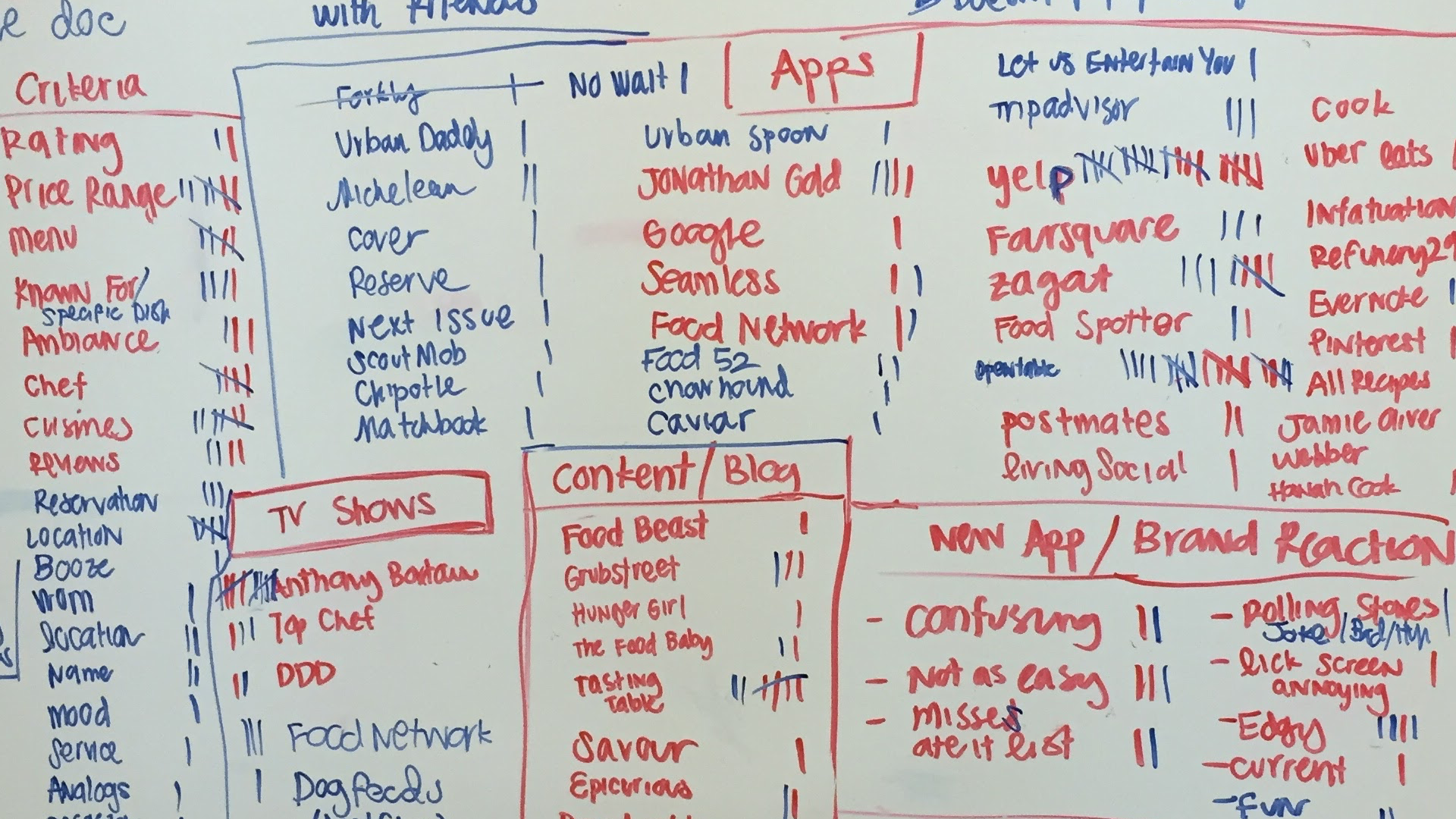Improving Engagement at ChefsFeed
As the lead designer and researcher, my first task was to uncover why users weren’t engaging with the app and define improvements that could maximize long-term value. I led research initiatives, analyzed data, and partnered with Instrument, the design agency behind the rebrand, to design and prototype solutions that could transform the experience.
Problem
In 2015, ChefsFeed went through a major rebrand, launching a new app with a bold, edgier identity aimed at millennial diners. The rebrand succeeded in driving installations, but once users entered the product, engagement remained disappointingly low. The company needed to understand why the app wasn’t sticking and how to align it with users’ dining habits better to create meaningful, repeat usage.
Understanding the User
We began with a broad quantitative signal, a survey sent to 10,000 users, yielding over 1,000 responses. From there, I conducted in-depth, 45-minute interviews with 21 participants to explore their dining habits and use of the ChefsFeed app.
From this research, I identified three critical friction points:
Navigation & Terminology: Users struggled to find the navigation hidden in a micro-interaction at the bottom of the screen, and many were confused by the app’s vocabulary.
Search: The search feature, core to the app’s value, was underdeveloped and failed to surface relevant results.
Lists: Many users were curating dining recommendations using external tools, signaling a missed opportunity to create a “sticky,” engagement-driving feature within the app.
Creating a Vision
For quick wins, I recommended exposing the navigation more clearly and simplifying terminology so users could more intuitively move through the app.
The bigger opportunity was rethinking search and lists, which we approached by drawing inspiration outside the food industry. Music platforms like Spotify and Apple Music, for example, offered strong models for breaking down large sets of content into digestible, relevant categories.
I designed an MVP prototype that reimagined search to surface richer, more relevant results, enabled users to explore content more deeply, and introduced the ability to create personalized lists, allowing diners to curate and return to the experiences that mattered most to them.
Impact
I completed the designs shortly before leaving ChefsFeed, so I wasn’t able to track immediate performance metrics. However, the solutions we prototyped became core to the product’s functionality long after my departure, proof that the vision was both durable and impactful. Chefsfeed was acquired by Tastemade in 2020.
For me, this project reinforced the importance of grounding product design in user research and looking beyond industry borders for inspiration. It also highlighted how minor improvements (like exposing navigation) combined with bold bets (like list creation and more intelligent search) can create an experience that not only meets user needs but also drives long-term engagement.


